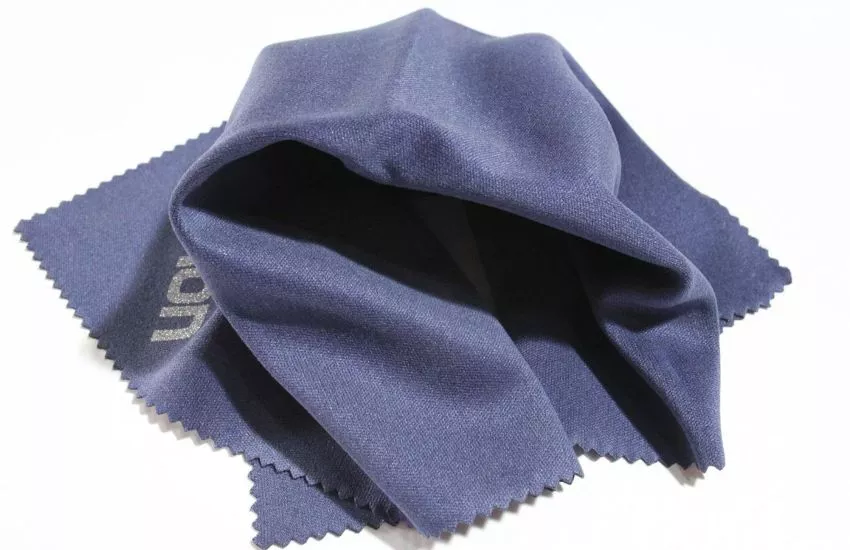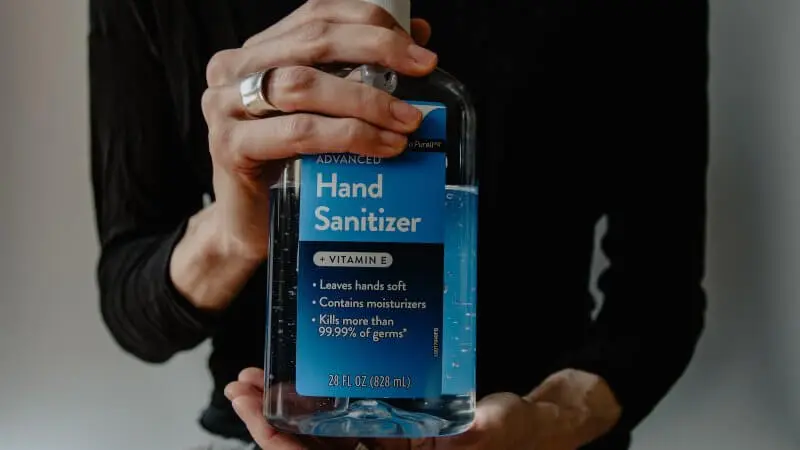Nylon and polyester are among the most popular synthetic fibers. Due to their popularity, people always ask whether nylon is polyester. This article discusses whether nylon is polyester.

Both nylon and polyester are synthetic fabrics made from petroleum. However, even if nylon and polyester fibers are made from petroleum, the fibers are made from different processes, making them different from each other.
As many online sources have already compared nylon to polyester, I want us to look into the physical and chemical properties of the two fibers and have a good understanding of how nylon fibers are similar and different from polyester fibers.
For example, I am sure you already know that nylon and polyester are durable fabrics. But I bet you might not know which of the two fabrics is stronger than the other.
Physical And Chemical Properties of Nylon And Polyester
| Property | Nylon 6 | Polyester |
| Tenacity | 6.0 – 8.5 gm/den | 5 – 7 gm/den |
| Resiliency | Excellent | Good |
| Elasticity | Excellent | Good |
| Elongation at break | 60% | 45% |
| Density | 1.14 gm/cm3 | 1.37g/cm3 |
| Moisture Regain (MR%) | 4% at 65% RH | 0.40 at 65% RH |
| Melting point | 2150C | 2500C |
| Heat resistance | < 1500C | < 1500C |
| Luster | Bright to Light | Bright to light |
| Ability to reflect light | Not good | Good |
| Ability to resist friction | Excellent | Excellent |
| Color | White | White |
| Acid resistance | Good | Excellent |
| Alkali resistance | Good | Excellent |
| Bleaching effect | Strong oxidizing agents can be harmful | Not impacted by the bleaching process |
| Organic Solvent | Soluble in dense acid or phenol | Not affected by organic solvents |
| Resistance to mild | Excellent | Excellent |
| Resistance to insects | Excellent | Excellent |
| Biodegradable | No | No |
| Dyeing | Can be dyed with direct dyes, acid dyes, and vat dyes | Dyed with disperse, azoic color and some pigments |
| Price | Cheap | Slightly cheaper than nylon |
As seen above, the two fibers differ when their chemical and physical properties are compared. We will now delve deeper into the different properties of the two fibers so that we can have a better understanding of how nylon and polyester differ.
Tenacity
Tenacity is ordinarily used to measure the strength of the fiber and is usually explained as the breaking force of the fiber. The tenacity is thus the maximum load that a fiber can support.
According to Bunsell, nylon 6 has a higher tenacity than polyester as the tenacity of nylon 6 is 6.0 – 8.5 gm/den, while that of polyester is 5 – 7 gm/den.
As pointed out by Service Thread, which develops and delivers engineered yarns and sewing thread, if the strength of a fiber is an essential aspect of your fiber needs, then you should opt for nylon 6 fibers. Nylon has a higher tenacity than polyester implying it is stronger.
Resiliency
Resiliency in fabrics entails the fibers’ ability to ‘go back’ or return to the initial form or position after they have been bent, compressed, wrinkled, distorted, or stressed.
Resilience is essential in any garment’s comfort and performance since a garment with good resilience is easy to wear and remove.
In addition, the garment will also facilitate ease of movement, specifically in areas such as elbows, shoulders, and knees where bending is needed.
Even if polyester has good resiliency, nylon has a higher resiliency than polyester. Nylon’s higher resiliency makes the fabric more durable than polyester since when nylon fibers are compacted, they can quickly bounce back.
When cars were invented, seat belts were mainly made of nylon since the fibers were found to be more resilient than polyester. However, car manufacturers later switched to seat belts made from polyester as it was discovered that nylon did not completely resist UV radiation.
Elasticity

In a fabric, elasticity entails the ability of a deformed fabric surface to go back to its initial shape and size once the forces that are causing deformation are withdrawn.
Elasticity in fabrics can also be described as stretch. Nylon fibers generally have a better stretch than polyester as nylon fibers can stretch anything between 15% and 30% without breaking.
By using the latest fabric weaving technologies, fabric manufacturers have been able to make slightly stretchable polyester fabrics. Nevertheless, polyester stretch is low (2-5%) when compared to the stretch of nylon fabric.
Elongation At Break
Elongation at break is a measurement that indicates the extent to which the fibers of a specific fabric can be stretched without breaking. It is also known as percentage elongation or fractured strain.
To find out the elongation at break, a fabric’s final length is contrasted with its initial length and then multiplied by 100.
Nylon’s elongation at break is 60% while polyester’s elongation at break is 45%. The high elongation of nylon shows that nylon fibers will deform and not break more than polyester fibers when subjected to a tensile load.
Density
The fabric density measures the base weight of fabric in the context of grams per cubic centimeters or meters. To determine the thickness of the fabric, the density of the fabric is used.
The density can also determine the amount of fiber in a meter square of the fabric, making it easy to establish how strong and thick the fabric will be.
Density is primarily used to contrast the weight of different textile garments whose thread count fails to offer adequate information. For instance, if a specific clothing item will be ideal for hot or colder seasons.
Nylon has a density of 1.14 gm/cm3, while that of polyester is 1.37g/cm3. The high density of polyester shows that polyester fabrics are thicker and warmer than nylon fabrics.
Moisture Regain
Moisture regain of a fabric entails the amount of moisture a fabric can reabsorb or regain after it has been dried. Moisture regain of fabric is essential as it helps determine how a fabric will react to moisture.
As fabrics are exposed to moisture, the amount of moisture in the fabrics will change. The change in the amount of moisture in a fabric changes some of the fabric’s physical properties such as tensile, stretch, and elasticity.
To understand moisture regain better, I can use the example of cotton – a natural fabric. When cotton fibers are exposed to moisture, the fibers quickly absorb moisture, and as a result, the weight and strength of cotton fabric increase. But, in the case of some synthetic fabrics that are not absorbent, the moisture doesn’t affect them a lot.
Nylon has a moisture regain of 4% at 65% RH, and polyester has a moisture regain of 0.40 at 65% RH. The low moisture regain of polyester gives the fabric a better moisture-wicking property.
If you had a friend wearing a nylon top and you wore a polyester top and you both sweat, the low moisture regain of polyester implies that the polyester top will dry faster than the nylon top.
Low moisture regain in fabrics results in a fast buildup of static electrical charges through friction, giving a very unpleasant electric shock. It is for this reason that polyester and other fabrics with low moisture regain give electrical discharge.
Melting Point And Heat Resistant
A fabric’s melting point is the specific temperature at which the fabric will melt. Fabric with a high melting point can resist more heat before it melts.
Busnell (2018) explains that nylon melts at 215 – 2550C while polyester has a melting range of 250 – 2650C. The high melting points of polyester and nylon mean that the fabrics can withstand a lot of heat before they start melting.
Heat resistant property, however, shows the temperatures at which fabrics can be burned. Both nylon and polyester fabrics can resist heat up to 1500C. The high heat resistance of the fabrics makes it hard to shrink 100% nylon or polyester.
Luster
In fabrics, luster entails the extent to which light is reflected from a fiber’s surface or the extent of gloss or sheer that fiber has. The physical structure and inherent chemical properties of fabric determine its luster.
The luster of synthetic fabrics differs from bright to dull based on the amount of delusterant (chemical agent for minimizing brightness in fabrics) that has been added to the individual synthetic fibers.
The luster of polyester and nylon can vary from light to bright depending on the delusterant added to nylon or polyester fibers. For example, when titanium dioxide is added to polyester and nylon fibers, it will disperse and absorb light, making the fabrics appear dull.
The luster in a specific polyester or nylon fabric can be customized as desired by garment manufacturers, mainly according to fashion trends.
Solvent and Chemical Resistance
Solvent and chemical resistance of a fabric refers to the fibers in the fabric being able to maintain key properties when exposed to different solvents and chemicals.
Among other factors determining a fabric’s resistance to solvents and chemicals are the fiber’s diameter, temperature, and stress on the fiber.
Nylon has good resistance to many solvents and chemicals. Nevertheless, nylon fibers are attached by oxidizing agents and mineral and organic acids.
Nylon fibers resist hydrocarbons like kerosene, diesel, and gasoline. The fibers also resist cleaning solutions, oils, and alkali. Due to its moisture regain, nylon absorbs small amounts of water, low molecular weight alcohols, and solvents with chlorine.
Polyester has excellent resistance to acids, oxidizers, and solvents. In addition, the fibers also resist all hydrocarbon fuels. Nevertheless, alkali-like solid, concentrated sodium hydroxide solutions can attack polyester fibers and damage them.
Price
Raw materials and the manufacturing process used in fabric manufacturing are among the key factors impacting fabric prices.
Polyester and nylon are both made from petroleum. Polyester is cheaper than nylon because its production process is cheaper.
Considering that nylon is elastic and has a higher tenacity than polyester, the high price of nylon is justified.
Another reason to explain the low price of polyester is that the polymer used to make polyester is of low quality and cheaper than the polymer used to make nylon.
Conclusions
Nylon is not polyester. The only thing the two fabrics have in common is that they are synthetic. In general, the fabrics have similar properties to synthetic fabrics as they are durable, resistant to shrinking, lightweight, easy to dye, resistant to stains, and resistant to chemicals.
When nylon and polyester are directly compared, nylon is expensive, stronger, stretchier, and more durable than polyester. Nylon has poor abrasion resistance making it pill easily than polyester. In addition, nylon is less resistant to chemical and UV radiation.
Sources
Bunsell R. A. (2018). Handbook of Properties of Textile and Technical Fibres.
Timar-Balazsy, A., Eastop, D. (2012). Chemical Principles of Textile Conversation.
Zweben, C., Kelly, A. (2000). Comprehensive Composite Materials





